The centerpiece of President Obama’s climate change agenda goes to court on Tuesday, where it will face challenges from 28 states, the coal industry and more than 100 other groups. But in a broad sense, it’s the opening salvo of a fierce legal battle that will decide his legacy on global warming.
Oral arguments in the D.C. Circuit Court of Appeals are the beginning of the legal challenges, not the end, because the case is expected to go on to the Supreme Court, which stayed Obama’s Clean Power Plan in February.
The power plan, which the Environmental Protection Agency made law a year ago, orders states to cut greenhouse gas emissions by a third by 2030 to fight global warming. It is the centerpiece of Obama’s climate change agenda and the cornerstone of his effort to meet U.S. obligations under the 2015 Paris climate deal to reduce carbon emissions from fossil fuels worldwide.
Judges this week will be asked to rule that the EPA misapplied its authority to regulate existing power plants by seeking to regulate states, and that it went beyond congressional intent and violated the Constitution.
The constitutional claims may be the ticket to a Supreme Court date next year. It agreed with state and industry challengers on Feb. 9 to halt the EPA rule while awaiting a decision by the D.C. Circuit Court of Appeals, which might take until next year. State attorneys general and the coal industry say the stay proves the justices agree with the merits of the case.
Meanwhile, the EPA and its supporters say the Supreme Court’s action implies nothing about the strength of their arguments. The court stayed the plan knowing it would come back for judgment later, observers say. But first it has to go through the federal appellate court.
“When deciding the legality of EPA’s power plan, the court must address issues ranging from whether EPA has any authority to regulate [carbon dioxide] from coal-fired power plants at all to whether the plan is at its core unconstitutional,” said Laura Sheehan, senior vice president for communications at the ‎American Coalition for Clean Coal Electricity, and a plaintiff in the lawsuit.
“Regardless of the argument, we remain steadfast in our hope that the court rules against this overreaching plan and puts states’ rights ahead of politicized agendas being promulgated by D.C. bureaucrats,” she said.
At the D.C. Circuit
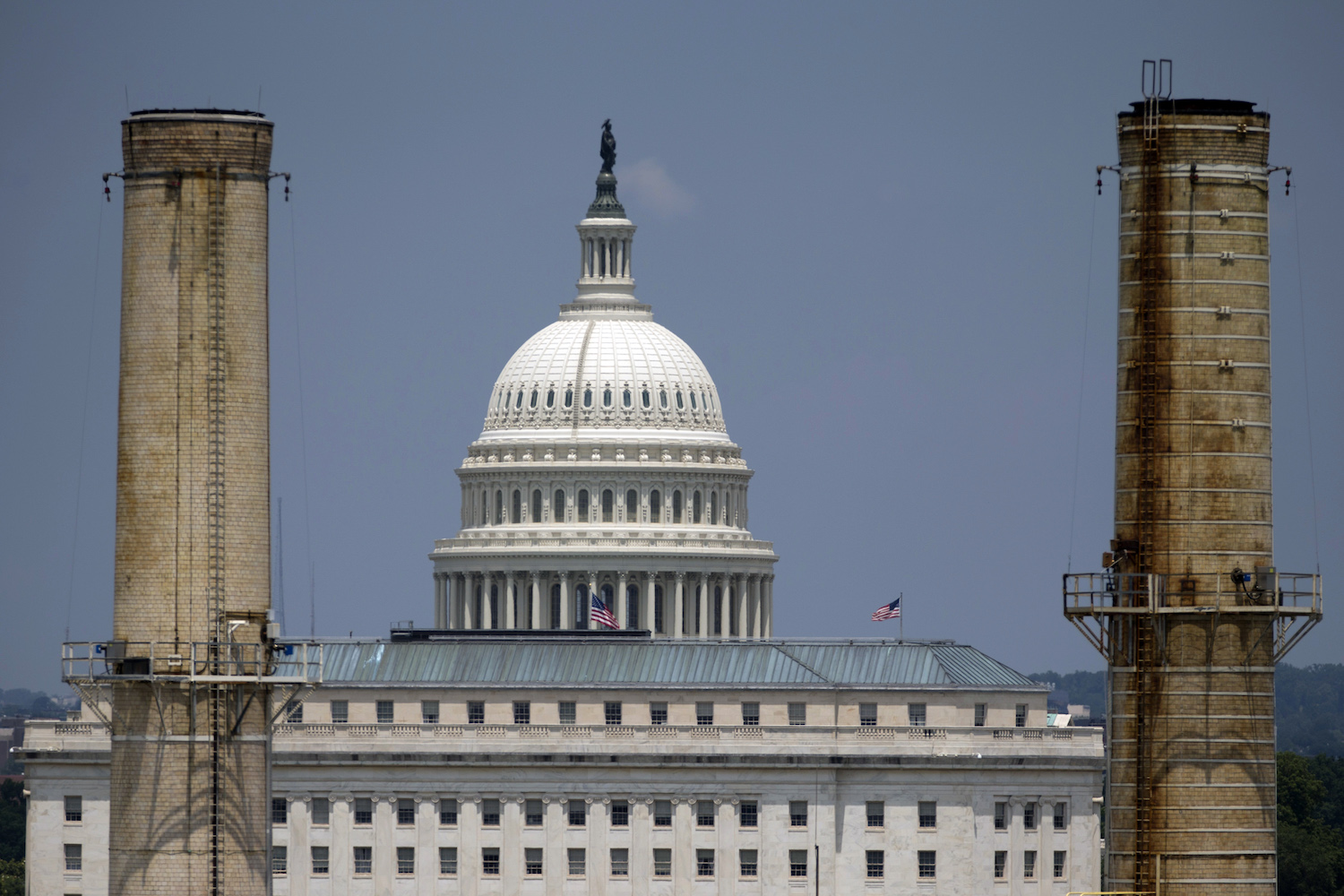
Judges this week will be asked to rule that the EPA misapplied its authority to regulate existing power plants by seeking to regulate states, and that it went beyond congressional intent and violated the Constitution. (AP Photo)
The administration also faces a full complement of judges at the Court of Appeals, considered the highest court in which to challenge regulations before going to the Supreme Court.
The court has set a fast schedule to review the Clean Power Plan, and in a rare decision has replaced the normal three-judge panel to hear oral arguments with an “en banc” hearing, which will include more than three times as many judges.
“That means there will be [ten] judges, and the senior judge usually presides,” says Jeff Holmstead, former EPA air chief under President George W. Bush and now partner at Bracewell Law. Judge Karen Henderson, appointed in 1990 by President George H.W. Bush, will preside over arguments as senior judge. The rest are Obama appointees and others, Republican and Democrat.
The 10 will not include Chief Judge Merrick Garland, Obama’s pick to replace late Justice Antonin Scalia. He has recused himself.
Judge Brett Kavanaugh, once White House legal counsel to President George W. Bush, and a preferred GOP choice for the Supreme Court, will be one of the most high-profile and outspoken Republicans at oral arguments Tuesday.
He has a broad array of experience in addressing and writing legal opinions on EPA regulations, and has come down hard on the agency.
“I think by going en banc immediately and bypassing the normal three-judge panel, they’re signaling this is extremely important and want to give this a lot of thought,” said David Bookbinder, former senior counsel to environmental stalwarts Sierra Club, at a panel this month.
“It means a huge amount that the D.C. Circuit is going to give it a lot of thought,” he said, because the Supreme Court, missing a member, could be deadlocked.
“With only eight justices [on the Supreme Court], they could easily be split 4-4 … in which case the D.C. Circuit decision stands, and that’s the end of the matter,” Bookbinder said.
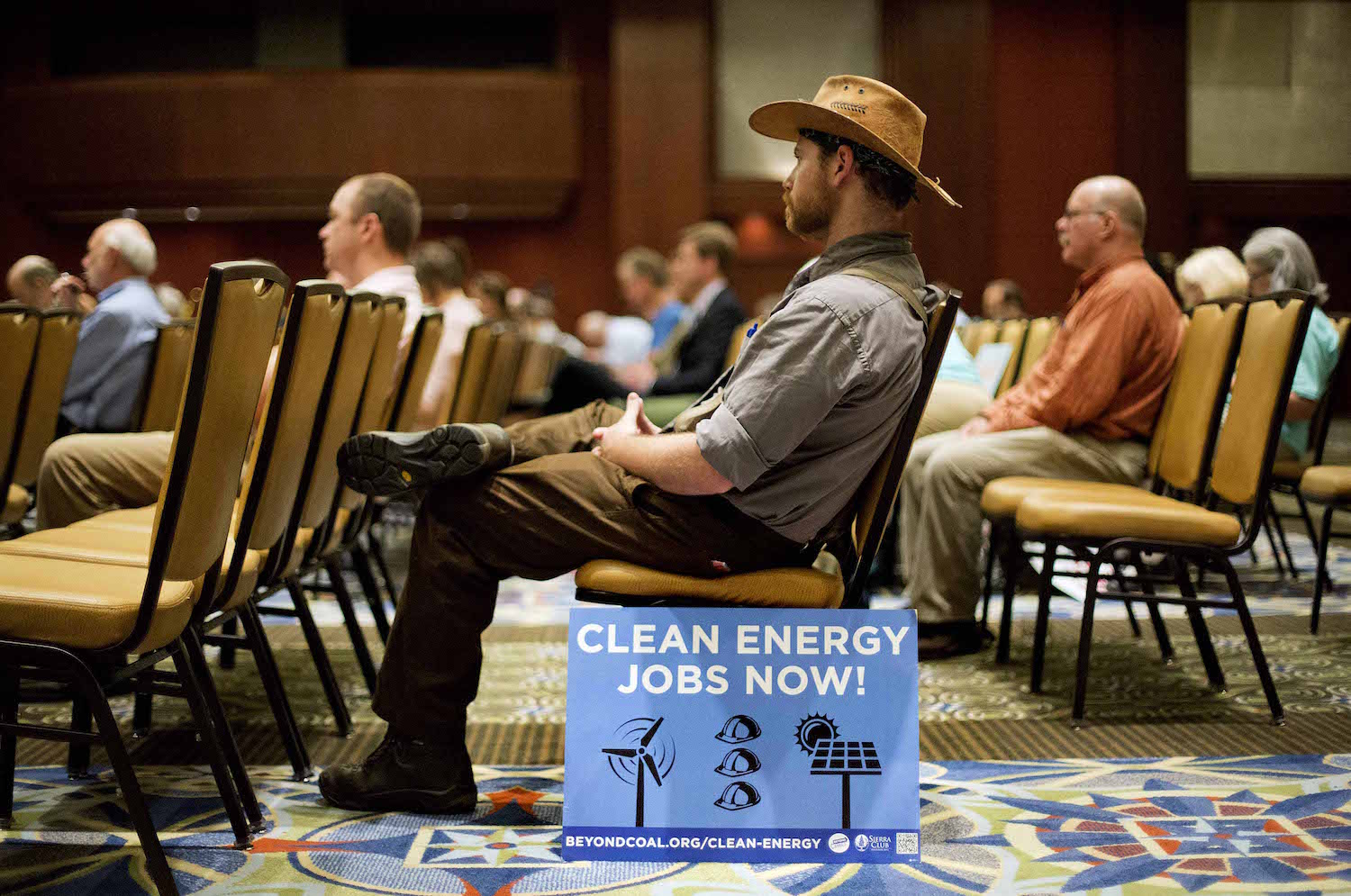
Environmentalists and the EPA downplay the idea of energy destruction, saying the Clean Power Plan only acts to nudge states in the direction that their markets are already heading. (AP Photo)
Some proponents like to think they can get six votes in favor of the Clean Power Plan on the Supreme Court, but Bookbinder thinks support is much narrower. “If I had to guess, I would have to say it’s 5-3,” he said.
“The en banc decision is going to have an enormous weight under any circumstances, and that’s unprecedented,” Bookbinder added.
David Doniger, the Natural Resources Defense Council’s climate change director, played down the significance of the appeals court’s decision, saying it is simply being efficient by moving to en banc review. His group will be arguing for the Clean Power Plan during oral arguments.
He speculated that the D.C. Circuit may have decided that a three-judge panel was “kind of exposed,” so they said, “Let’s bring the whole court into play.”
Doniger takes this view because a three-judge panel, earlier on, declined to take the case because it was premature to do so. Going en banc helps speed the process. A decision by just three judges can trigger rehearing requests seeking en banc review. “So, it’s an economy move,” Doniger explained.
He acknowledges that the court’s decision is important because it may prove final. “It might well be that if the D.C. Circuit writes a convincing opinion, the [high] court declines to review it because either there aren’t four votes for certain,” or there aren’t five votes to refer it, Doniger said of the panel.
Based on the Supreme Court’s makeup, “the D.C. Circuit argument is very, very important.” Still, he says he believes the Supreme Court has enough votes to approve the climate plan.
Everyone assumes that the losing side will appeal to the Supreme Court.
Doniger told opponents not to read too much into the Supreme Court’s stay on the rule. It was a rushed decision granted in two days based on “the apocalyptic vision” from state attorneys general and the coal industry.
In the end, the Supreme Court will see “they had been had,” Doniger said.
The arguments
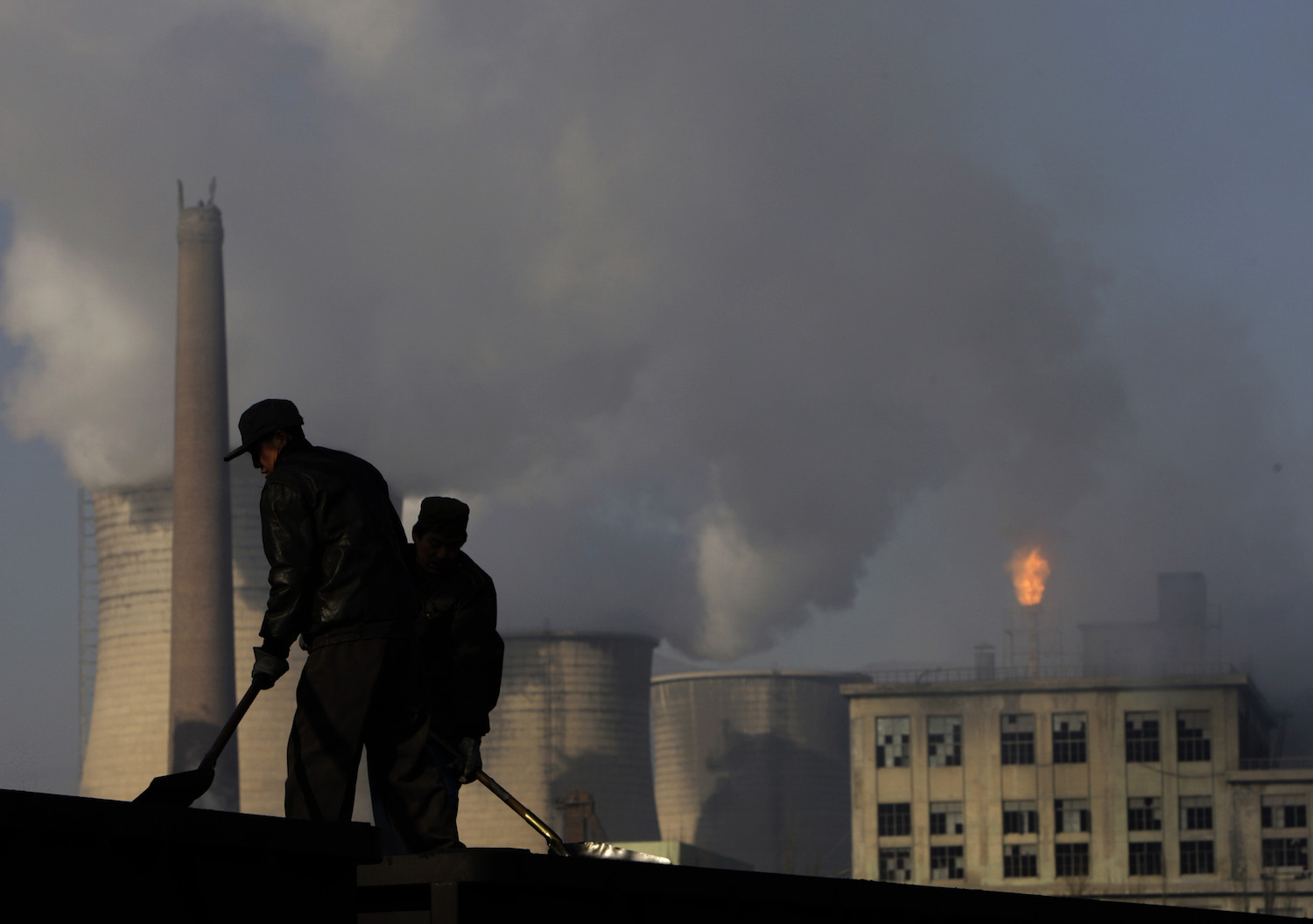
The mining association and most states in the lawsuit will argue that the EPA is giving states few options “but to eliminate fossil fuel plants,” primarily coal plants, Luke Popovich, spokesman for the National Mining Association, said. (AP Photo)
Luke Popovich, spokesman for the National Mining Association, a plaintiff, said lawyers will use oral arguments to prove the Clean Power Plan causes real harm to the industry.
Proving harm is key to reversing a regulation. If the judges aren’t convinced that the rule causes significant harm to the industry or broader economy, they generally don’t interfere. The mining industry has focused on harm in its briefs. Others have raised constitutional claims, he said.
“This is the burden we are carrying,” he said. The other arguments are valid, but the mining industry is focused on the extent to which the EPA has gone beyond its authority, and the degree to which that will harm, not only the industry, but the economy.
They have told the court in briefs leading up to oral argument “that there is immediate harm to this.” That’s the “principal reason we won the stay on Feb. 9,” due to the “immediate and irreparable harm,” he said.
“Even EPA admits … that the Clean Power Plan will force the retirement of 56 coal-fired power plants by 2018,” Popovich said. That’s over 55 million tons of coal lost, which will cause a massive shift from coal to natural gas, raising prices for consumers and harming economic growth.
“Our core argument has to do with our insistence that EPA has misapplied the law by overstepping its authority, specifically by abandoning an interpretation of section 111 [of the Clean Air Act] that has been used for decades, which limits its regulatory authority toward sources, and setting performance standards that those sources can meet,” he said.
But that “is not what EPA, for the first time in four decades, has decided it can do” when regulating carbon, he explained. “It decided, in this case, it can use the states to simply transform the state grid.”
It does this by “imposing” emission reductions on the states, rather than do what is mapped out under section 111(d) of the Clean Air Act, which is imposing the restrictions directly on power plants, he said.
Where the EPA “once used a scalpel, they’re now using a meat axe,” Popovich said.
The mining association and most states in the lawsuit will argue that the EPA is giving states few options “but to eliminate fossil fuel plants,” primarily coal plants, Popovich said.

In its 2016 energy outlook, the energy information agency said that coal use will drop as much as 32 percent between 2022-30 under the plan, depending on how a state chooses to comply with the rule. (AP Photo)
“We say the rule’s reduction requirements can be met only, and I emphasize only, by shutting down hundreds of coal-fired plants, limiting the use of others and requiring the construction and operation of other types of facilities preferred by EPA.”
The EPA calls this “generation shifting,” which takes them “way beyond the fence line” of a power plant when setting emission targets.
“They are saying the fence line no longer defines our authority under the Clean Air Act,” Popovich explained. The EPA says it’s “going far and wide” in applying its authority, he added.
Two leading attorneys for states opposing the Clean Power Plan, Oklahoma Attorney General Scott Pruitt and David Rivkin, say the EPA’s legal basis is shaky at best.
Rivkin, who will represent states’ arguments, told a panel this month that the Clean Power Plan is about changing the nation’s energy infrastructure in fundamental ways, and in the process “destroying a large chunk” of it.
At the same time, the EPA is “doing in” the states by stripping them of their policing powers and ability to regulate their own energy markets.
Meanwhile, environmentalists and the EPA downplay the idea of energy destruction, saying the Clean Power Plan only acts to nudge states in the direction that their markets are already heading.
Pruitt, who is also legal counsel to the plaintiffs, said it’s not “a nudge” but “a big shift.”
In the rule, EPA calls it the “best system of emissions reduction,” but in actuality it is “generating shifting,” which translates to the closure of coal-fired and other fossil fuel power plants, and pushing states toward more expensive energy.
Bookbinder said the EPA is within its rights to require fuel switching. “The age of climate rules are upon us,” he said. Climate regulations aren’t going away, but he thinks Congress should be involved in creating a national climate plan, not the EPA.
“Congress should get off its ass and do something,” Bookbinder said.
Coal plants closing
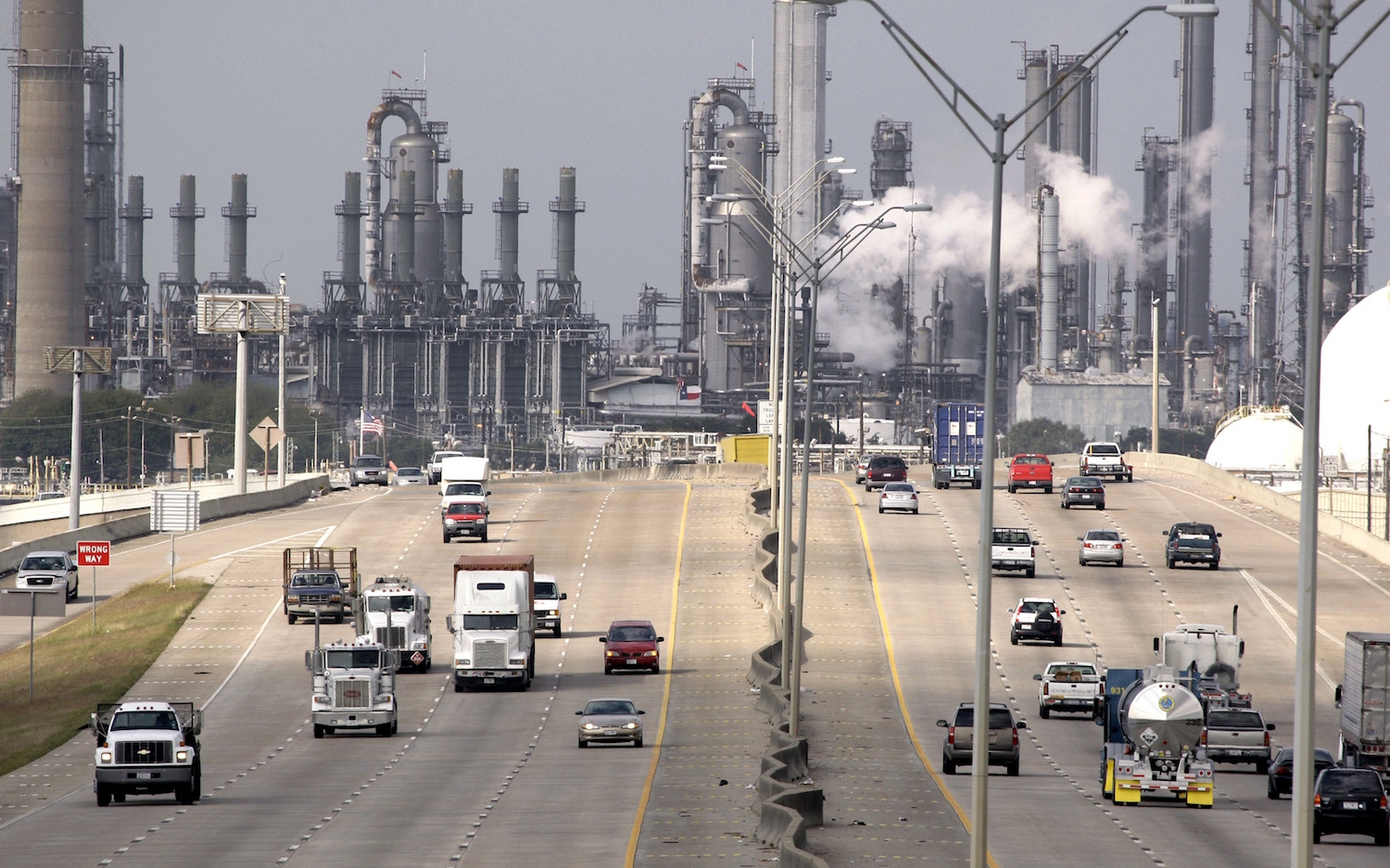
The agency says that without the Clean Power Plan, coal production actually increases as a hedge to higher natural gas prices after 2015, but then remains flat after 2020. (AP Photo)
With natural gas prices expected to rise next year, and federal data showing coal becoming cheaper, the cost of electricity could soar if coal becomes scarce.
The Energy Information Administration, the analysis arm of the Energy Department, says 20 percent of the coal fleet will be gone by 2025. The nation is increasingly dependent on natural gas for its electricity.
The Clean Power Plan will exacerbate this trend and hit consumers and businesses economically, the coal industry says.
In its 2016 energy outlook, the energy information agency said that coal use will drop as much as 32 percent between 2022-30 under the plan, depending on how a state chooses to comply with the rule. In a scenario where the Clean Power Plan continues beyond 2030, the number of coal plants decreases by 52 percent.
The agency says that without the Clean Power Plan, coal production actually increases as a hedge to higher natural gas prices after 2015, but then remains flat after 2020. Meanwhile, wind, solar and natural gas will become the leading type of new electricity generation, “which are more economic to build to meet new demand even without the [Clean Power Plan] in place.”
The EPA is expected to raise prices. Annual electricity price inflation is expected to be 1-5 percent during the 2022-30 compliance timeline when the rule is in effect.
An ad by Sheehan’s ‎American Coalition for Clean Coal Electricity that started running this month highlighted the importance of the court case to ensure the EPA doesn’t force people to choose between paying their electricity bill and buying groceries.
Who wins?
Carl Pope, Sierra Club’s former director, counters the economic harm argument by saying the number of coal plants retired under the EPA’s previous air pollution rules are driving cleaner sources of electricity, with very little harm to the economy.
The country is already moving away from coal, and the Clean Power Plan follows that trend line. This argument helped him win an Intelligence Squared Oxford-style debate this month on the Clean Power Plan, and the legal challenges against it.
The motion for debate was “Climate Change: The EPA Has Gone Overboard.” It was held live at George Washington University and webcast. Online and live polling were done before and after the debate. Before the debate, 59 percent were against the motion that the EPA had gone overboard. By the end of the debate, 72 percent were against the motion.
Those for the motion stood at 18 percent before the debate, and 23 percent in post-debate live and online electronic polling.
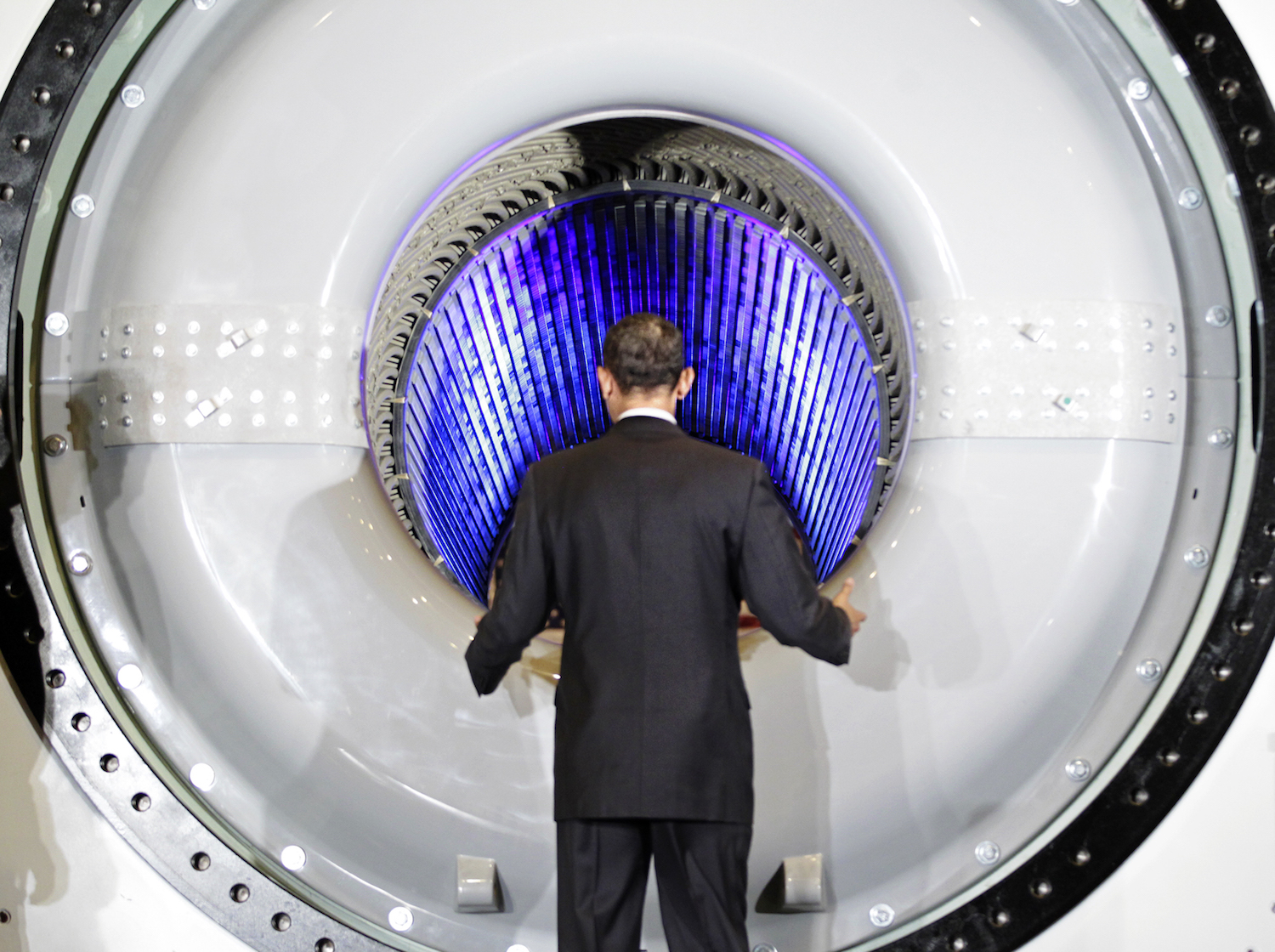
EPA says that wind, solar and natural gas will become the leading type of new electricity generation, “which are more economic to build to meet new demand even without the [Clean Power Plan] in place.” (AP Photo)
Such numbers, however, are unreliable, as people who attend the debates not uncommonly game the system by concealing their opinions at the beginning so as to produce a big swing in their direction in the final tally.
“The Clean Power Plan is not … environmentally based policy,” Charles McConnell, a former Energy Department senior official under Obama, said during the debate, arguing for the other side.
“The science doesn’t support it,” he added. “Why?” Studies have shown that the Clean Power Plan produces a 0.02 reduction in global CO2 emissions, while global warming is reduced by an equally slim number, 0.01 degrees Fahrenheit, he said. The impact on sea-level rise under that scenario would be the “thickness of a dime,” McConnell said.
“By 2025, the total impact of this plan will be offset by three weeks of Chinese emissions,” McConnell said. His side was in the minority from the beginning of the debate. It may be that the motion set the debate up to favor the EPA.
Others have a different spin on the possibilities that could result from the legal fight.
Bookbinder, who is an environmental lawyer, said the “most useful function” of the Clean Power Plan is to spur Congress to take action.
He told the Washington Examiner that the best result from the litigation would be “to help goad Congress into taking action.”
“One of the things that EPA did in this rule was to be very clear that they were setting the actual standards at something that was easily achievable,” Bookbinder said. This was done strategically to weaken arguments over the targets being impossible to meet.
“The targets were set deliberately low because they wanted to have the fight solely over ‘do they have the legal authority to do this,'” Bookbinder said.
If they are able to demonstrate they have the legal authority under the Clean Air Act, “then what does the next round of litigation look like? The targets will be much harder,” he said.
“EPA will not stop with this version of the Clean Power Plan. It will go forward, and I think everybody knows it will go forward. So presumably, that will encourage Congress to deal with this issue.”
What Congress could do is “curtail EPA authority in exchange for the easiest thing, which is a carbon tax,” Bookbinder said.

